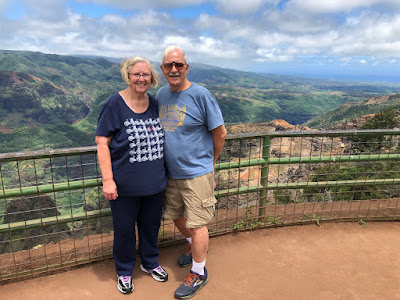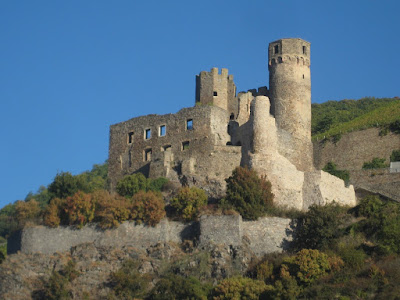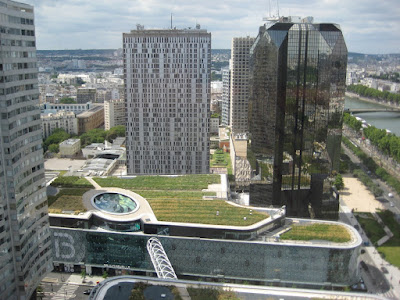One
of the many casualties of Covid-19 has been traveling. The travel industry,
especially ship traffic, has been particularly hit hard. Over the years, whether
in a group or alone. Sharon and I have been very fortunate to have covered a
good part of the globe. We’re certainly not seasoned travelers like a lot of
our friends. But the miles traveled have been fascinating and satisfying; what
more could you ask for? Unfortunately, I don’t expect to be traveling anytime
in the near future.
A
couple of years back, we did several river cruises in Europe. With concern for Sharon’s
adverse reaction to motion sickness in mind, we found that these flat-bottomed
river boats satisfied our need for slow speed and scenic vistas with a total
lack of concern for the ebb and flow of the river.
The first river tour we did was called ‘The Great Rivers of Europe.’ It was our first introduction to European river cruising and we were hooked. Unfortunately, it may be a very long time before either one of us is willing to share tight quarters with a group of complete strangers again. So for now, we have our memories, some good pictures and a real appreciation for the beauty of river cruising in a foreign land.
Once the most efficient and fashionable means of travel throughout Europe, river cruising continues to be an ideal way to discover the culture, cuisine and unique characteristics of the many countries traveled through. Two of the primary water ways we traveled were the Rhine and Mosel Rivers. Yet for all their similarities, the Rhine and Mosel wear two very different masks.
There’s
a reason one is called Father Rhine and the other Mother Mosel. Two rivers,
each harboring different personalities, yet both are life vessels to their
pass-through countries.
Beyond the bucolic landscapes dotted with fairy-tale castles, terraced vineyards and rust-covered maritime facilities, the Rhine and the Mosel provide a glimpse into their respective history of the region. As economic engines, both rivers continue to provide a wealth of economic infusion into the local communities hugging their banks.
For over 2000 years, Father Rhine, as it is called by the locals, has been Europe’s most important commercial waterway. Its scenic beauty has inspired countless myths and legends. By introduc-ing vines to the region, the Romans paved the way for the excellent vintages that are a further source of the Rhine’s international reputation.
The
Rhine River rises in south-east Switzerland and reaches the North Sea after a
journey of over 1230 km. While industrialization has left its mark on some
parts of the river, most of the water-way provides an idealistic pass-through
of towns and villages that have existed there for over hundreds of years.
Mother Mosel wears a very different moniker. Since the days of the first Romans, over 2000 years ago, the most exquisite asset of the Mosel countryside has remained its wine production. Generations upon generations have nurtured, embellished and refined a giant open-air amphitheater to the honor of Bacchus, the God of Wine. The towering slate cliffs store the day’s warmth for the cool evenings that follow while the grapes ripen at just the right angle to the sun.
Leaving Basel, Switzerland, our ship followed what seemed like a meandering path along both the Rhine and Mosel Rivers. It was one river seemingly indistinguishable from the other. It was a daily tapestry of colors, images, sights and sounds that captured our attention and imagination. Walking tours included the obligatory market plazas, cathedrals, historical sites and opportunities for shopping.
The Mosel like so many rivers in Europe unmasks different personalities as it passes through many different regions of Germany. Beyond the bucolic landscapes dotted with fairy-tale castles, terraced vineyards and rust-covered maritime facilities, the Mosel provides a glimpse into its storied history of the region.
Mother Mosel (aka Moselle) River begins its journey in France and flows into Germany where it twists sharply for 150 miles and deposits itself into the Rhine on its way to the North Sea. Along this winding river gorge are found some of the most classic Riesling wines in the world.
Because of the northerly location of Mosel, the Riesling wines are often light, tending to lower alcohol, crisp and high in acidity, and often exhibit ‘flowery’ rather than ‘fruity’ aromas. It’s most common vineyard soil is derived in main from various kinds of slate deposits which tend to give the wines a transparent, mineralic aspect, that often exhibit great depth of flavor.
Generations upon generations of craftsmen have nurtured, embellished, and refined a giant open-air amphitheater to the honor of Bacchus, the God of Wine. The towering slate cliffs store the day’s warmth for the cool evenings that follow while the grapes ripen at just the right angle to the sun.
In the middle ages, whole villages sprung up that were centered on the region’s wine industry. These ‘wine villages’ included paths from the town center up to the area’s vineyards. Nothing much has changed over the centuries except that now those footpaths have been widened and paved over for heavy transport to ascend the heights to harvest the grapes.
Dating back hundreds of years, castles dot the countryside and add to the beauty and charm of the region. The castles are a throwback to the age of kings and queens, lowly peasants, feudal lords fighting for territory and knights in dented armor.
After two river cruises crossing central Europe, we opted for a smaller boat and a trip to the South of France. Our trip began in Paris and ended in Nice. In some strange sort of way, it was deja-vu all over again for me, at least the Paris part of the journey.
It had been a long time since I’d been tramping down the narrow streets and grand thoroughfares of old Parie. Paris has always been a seductive mistress. As the song title goes, ‘The Last Time I saw Paris,’ it was a much different time in my life. My first sojourn into the city of lights was supposed to be a simple pass-through as part of a full-blown retreat from the harsh reality of winter in Denmark.
The
experience of living in Denmark had been exhilarating at first. But gradually
the daily work routine had grown stale with a lack of friends and no clear
direction in my life. Then as the first snowflakes powdered my apartment steps,
I realized another Minnesota winter was in my near future unless I split for
someplace warm.
The
south of France seemed a logical answer to a young pup ill equipped to face
that Nordic reality. Tall tales of warm sunshine, topless sun bathers and easy
work was enough to lure me into the false sense of road security. I was assured
that a quick thumb and ready smile would take me there in just a couple of
days.
By
the time I got to Paris, all bets were off. I trudged through the city in hope
of enlightenment but instead only got hustled by Gypsies. After three days of
aimless wandering I was ready to cash in my pocket money for a ticket home and
three steady meals a day. I found a travel agency, got a one-way ticket home,
and left on a silver bird the next day.
Paris has always been that stand-alone, a bit standoffish kind of friend. At once it can be charming, brash, conceited, seductive, alluring and always surprising. Taken on its own terms, the city offers sunlight and sin on an equal basis.
The city is different now than back in the 60’s. Ornate low-rise buildings have been toppled by towering glass hi-rise commercial enterprises. There are more tourist boats on the Seine than commercial traffic. Bike-sharing stations pepper the city with their light blue bikes while the new tour buses squeeze into narrow side streets that even an old donkey cart had a hard time maneuvering.
The city has evolved and changed yet feels much the same as it did back in the Fall of Sixty-Seven. The locals have long grown used to the artists, vagabonds, tourists and people of the streets who wander by their doorsteps in search of enlightenment. The smell of cooking, cleaning, and daily living still permeates the side streets and dark alleys.
There’s
a Parisian phrase that goes: ‘On the Left Bank, we think and on the Right Bank,
we spend.’ I have little interest in the Right Bank where towering glass
institutions of commerce and wealth line the Seine. My heart and my head are
back on the Left Bank where Montmartre and the Latin Quarter still attract all
kinds of creative spirits. While there’s no time to retrace Hemingway’s Paris
haunts; I find the quaint cafes, dark narrow alleys and winding streets are
still
filled with the polished and unwashed alike. And while the new Bobos (bohemian
bourgeois) fake their artistic lineage at gallery openings, true artists
continue to live in squalor and strive to find meaning in life itself.
Montmartre
still holds an allure for me. Climbing its hill brings back the same sense of
wonder along with deep breaths and dampness across the brow. Parisians talk
about the place the way New Yorkers talk about the village. Hemmingway is no
longer lingering at some corner café but other bohemians, artists and lost
souls have taken his place.
Some places never change. Paris is one of them. Like other great cities that are constantly evolving with the times and different flavors of humanity that crowd its sidewalks and fill its cafes, the City of Love continues to hold an allure that is impossible to describe. Every visitor has their own version of its magical pull on their senses. For me it is the storied history of writers, artists, and bohemians who have haunted its shadowy recesses since Celtic Gaul’s walked its shores.
The
first time I stumbled into Montmartre, I ordered a coffee at some small corner
café. It was a thick black muck that gripped my spoon and burned my throat. No
wonder all the pretty young girls were sipping theirs so slowly and taking
forever to finish their thimble-sized drink.
This
time around, I ordered a beer and slowly sipped it, taking forever to finish
the warm liquid. Crowds brushed past my chair and dropped cigarette butts at my
feet. The rush of humanity flowed unabated in a steady stream past our café.
They were all looking around but not seeing a thing. It was just another day in
Paris for them. Me…I was home again.
After three days of touring Paris, we were on a riverboat meandering south along the Saone River. The trip South to Nice was uneventful, restful and easy on the feet. It gave me plenty of time to ponder the times gone by and the journey I never completed back in ’67.
For me the best part of these trips were the periods of cruising the waterways. Ensconced in a lounge chair on top of our ship, I was surrounded by an IMAX presentation of surround sounds and slowly moving images. It became a place for me to get lost inside my head and let my imagination flourish. It was a time to reflect, appreciate, access and plan for the future.
Unfortunately, it’s probably going to be a long time before we venture back onto the low seas again. The quarters were comfortable but cramped, cozy but close and nearly impossible to social distance. Until we’re vaccinated and the world is close to herd immunity, I doubt we’ll set sail on those fascinating rivers again.
























No comments:
Post a Comment